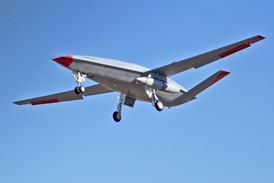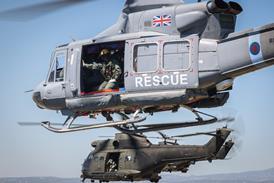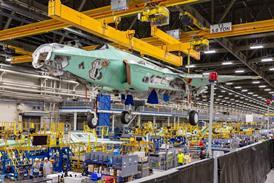Lying a few kilometres off the Turin-Milan motorway, Cameri airbase rises out of the Italian Piedmonte farmland as an isolated outpost. A few huts and hangars are clustered at the north end of a roughly 2,440m (8,000ft) runway.
Within just five years, Lockheed Martin and Alenia Aeronautica intend to transform this minor military station into one of Europe's most advanced - and busiest - aerospace manufacturing hubs.
Mostly in return for Italy's $900 million investment pledge for the F-35 development stages, Lockheed and Alenia will soon propose establishing a final assembly and check-out line inside Cameri's patrolled perimeter.
As proposed by Lockheed and Alenia, the government-owned facility will start assembling aircraft by 2014. It will be staffed by Alenia machinists most probably pulled from neighbouring plants in Caselle and Varese, with Lockheed workers from Fort Worth and Palmdale managing non-transferrable technologies.
The facility is expected to deliver all of Italy's planned acquisition of about 120 fighters, including conventional F-35As and short-take-off and vertical-landing F-35Bs. Cameri also could deliver all of the 80 F-35As now in the acquisition pipeline for the Netherlands. Afterwards, the facility could be converted into the logistics and sustainment hub for F-35 operators all over Europe.
Cameri would swiftly become a beacon of aerospace manufacturing within Italy. Alenia's manufacturing role on frontline fighters is limited to producing left-hand wings and rear fuselages for Eurofighter Typhoons. Alenia also builds fighter trainers in Varese, C-27J light airlifters in Caselle and fuselage barrels for Boeing 787s in Grottaglie, but no final assembly lines for fighters exist in Italy.
Lockheed also has subcontracted Alenia to build half of the wings produced for European F-35 partners. But Cameri's production line would represent a step forward in global aerospace capability, a visible symbol of technological superiority within Europe as each fifth-generation fighter rolls out of the final assembly hangar.
At least, that is the vision of the F-35's multinational industrial team. To become reality, the facility first must overcome Alenia's shock over Lockheed's initial price tag to open the production line. As important as Cameri is for Alenia, the company must win the support of a sceptical Italian parliament, which has already slightly reduced planned F-35 orders.
Within the nine-nation partnership, Italy ranks behind only the USA and the UK in its level of investment. Italian industry was initially discouraged by its failure to win key industrial supplier deals from Lockheed. Although its success rate improved, the Italian government is counting on the Cameri plant to recoup its financial investment in the F-35 development programme. The government has estimated the plant would be worth more than $700 million to Italian industry.
The plan to launch the facility was delayed last year by a government change in Rome. But negotiations could reach a climax by the end of the year. Alenia has said that the plan must be approved by the Italian government no later than January. If the decision is delayed again, it would be impossible to deliver the first aircraft from Cameri in 2014.
That schedule pressure had apparently intensified a dispute over the facility's possible cost. It is not clear how Lockheed priced its initial offer to open the facility, but Alenia officials balked, saying in September that the plan needed to be streamlined. The initial offer for Cameri included advanced tooling and processes that Lockheed designed to support a production rate exceeding 200 aircraft a year - the peak output for the Fort Worth final assembly line, but far in excess of the needs for Cameri.
Alenia responded to the Lockheed proposal by suggesting less advanced production tooling and methods that would not generate the same upfront costs.
Lockheed officials are evidently confident that a compromise on the Cameri production cost remains possible. The company has confirmed that negotiations over Italy's final assembly line are on track to reach a successful conclusion by the end of the year. In October, a Lockheed executive visiting Seoul even cited the Cameri facility as an example of what South Korea might expect if the country ordered F-35s. Cameri could yet rise from isolated outpost to aircraft production hub - and even a template for a global production system.
Source: Flight International
















